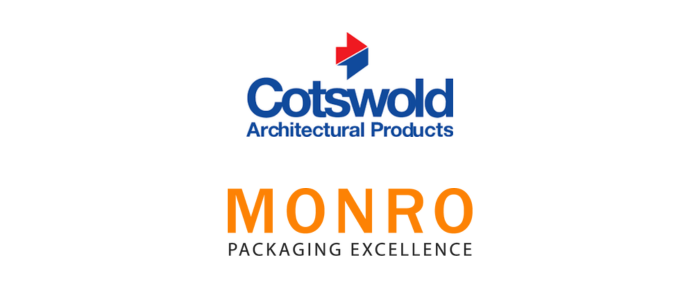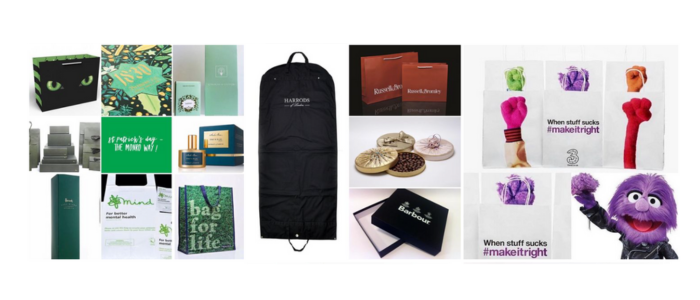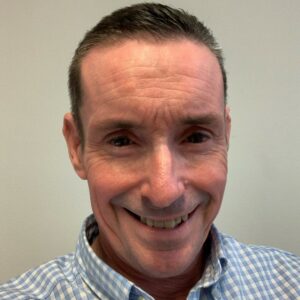In September, we hosted a webinar with two of our customers – Edwin van Dijk, Operations Manager at Monro Packaging, and Ian Greaves, Financial Director at Cotswold Architectural Products. They have both been through the process of evaluating alternatives to Sage 1000, selecting a solution development partner, and migrating to an integrated NetSuite system. With just 14 months to go before the popular financial software – Sage 1000 and Sage Line 500 – both become out-of-support and a number of businesses still on the fence about what action to take, we thought it would be useful to hear about the experience of digital evolution directly from migration project owners.
You can watch the 38-minute webinar entitled ‘What you need to know about ditching Sage 1000’ over on our YouTube channel, but here we summarise the key points from Edwin and Ian.

First, it makes sense to briefly talk about why businesses should adopt new business software. The question that we’re always asked are what does end-of-life actually mean and what will happen at midnight on 1 January 2025? Well, it’s not a millennium bug type situation! If you’re using the product post the end of 2024 you will still be able to use it; process a sales order, raise an invoice, whatever it is that you’ve used the application for previously. The difference will be that there will be no support from the author of the product – Sage – so if there’s anything wrong with the application itself, there will be nowhere to turn to for corrective support. If a third-party application or operating system that Sage relies on has an update and becomes incompatible with Sage then there will be no development fix to accommodate the changes.
Another consideration about whether to make the move before the software’s end of life is cyber security, which seems to be never-ending and ever-increasing threat to businesses around the globe. Cyber criminals prey on vulnerabilities within businesses and an unsupported software system is a red flag to a bull. Furthermore – and not an obvious factor – you should also consider your supply chain commitments; with events over the past few years causing significant disruptions in supply chains, resilience is a top priority and we’ve heard that increasing numbers of businesses are considering suppliers that are using unsupported software as a high risk. If you do nothing, is there a danger that you’re putting relationships at risk, which you’ve worked hard to forge?
End-of-life risks were considerations for Monro and Cotswold but each also had additional motivating circumstances. Edwin from Monro explained: “The reason for the change was twofold really. We used Sage 1000 and Sage CRM but the two didn’t really talk to each other and as a result we had a great level of duplication across the various functions. But also, there was a hardware background, let’s call it ‘monroified version’. We used some third-party providers with satisfaction database forms, we had been using Sage for about 10 years and it was running on servers that became unsupported. If I had to make the change to new servers, we had to refine the whole Sage package again but for a product which was basically out of date. That’s when we make the decision to leave Sage 1000.”
Cotswold were also starting to think about the consequences of using Sage past the end of 2024, but they were in a unique situation. The firm was part of a larger American-owned group and in May 2022 the group was sold. However, the Cotswold business was to remain in the ownership of the shareholders and as part of the amicable divorce process, new business and financial systems were required as their Sage 1000 software was a shared group architecture. “Our journey was somewhat dictated by a legal necessity”, explained Ian. “However, prior to the sale we’d already made the decision that we were going to start looking for a replacement system so that really just expedited the process.”

We asked Ian about how they started looking for a new solution. “A lot of people who use Sage 1000 probably would also consider other systems that were maybe more integrated. Particularly if you’re on the manufacturing side of things it had its limitations. We’re a fairly reasonable size manufacturing business with 120 plus employees, so the main limitation I think for us was always around the lack of a really good Material Requirements Planning (MRP) elements in Sage. And also, the lack of full integration as well around some of the Ledger postings. The danger is that people find workarounds where the system doesn’t offer strong integration.
“We identified three systems that we felt were going to tick a couple of boxes for us – budget was obviously a key one and having a fully integrated solution. There were the potential benefits of data migration to Sage 200 and we looked at SAP Business One and NetSuite, so we sought partners for each of those. We set out eight or nine criteria points, marked them and made a decision. Sage 200 didn’t have the complexity that we needed in terms of where we are and where we’re going. NetSuite really ticked the boxes and we felt we could implement it quickly.”
Read our deep dive comparisons of Sap Business One and NetSuite and NetSuite and Sage 200.
Edwin and his team also looked at three solutions and liked NetSuite because it’s fully cloud-based. This removes the challenges and cost of running on-premise servers and delivers the benefit of always being on the latest version. He said: “Backup costs had increased tremendously over the last couple of years and of course the security that that Oracle could provide was important, but of course we looked at the functionality. That’s where NetSuite stood out for us, to give us reduced duplication of efforts, more unified processes, significantly reduced paper trails and enhanced reporting capabilities.”
Monro’s project to ditch Sage 1000 and become a cloud ERP user with NetSuite went well but there was a six-month delay so Edwin shared some sound advice for implementation project owners. “Did we always have the necessary resources available? The answer is probably no. These aren’t projects that you implement frequently, there is a lot of resource that you need to put into these projects and people have got their day jobs to do as well. For businesses out there that are yet to embark on the process, if they want to move from Sage 1000 before end-of-life they should be starting that project as soon as they can. It will often take a little bit longer than anticipated because everybody’s got a day job to do, and you need to keep the wheels of the business moving.

“Do think about your specification, what you want the system to do and be quite rigorous in that. We did spend a lot of time on the specification stage which was good, and I think there were benefits from that. Of course, BrightBridge supported us through the whole process and have come up with many solutions. I was also very much aware that that as we progressed using NetSuite, we needed to further develop – that’s the beauty of NetSuite, it’s so scalable and customisable. But the difficulty is that you don’t know what NetSuite can deliver and how it can be developed. We started off with several workshops and got some very good in-house understanding of NetSuite. Oracle Academy it is worthwhile sending an apprentice or whoever. Let them spend some time with it and understand the system and a key user can really champion the system for you and know where those efficiencies can be gained.”
Ian and his team at Cotswold didn’t have the option of pushing back their project deadlines due to the legal agreement with the separating parent group, which stated that the system migration had to be complete by the end of June 2023. Therefore, he advised companies who are switching ERP solutions to focus on data but also keep timescales reasonably tight: “I think the longer you give yourself the more chance you’ve got of it being extended. Our four-month deadline felt fairly ambitious from all sides when we when we started but it does have a tendency to focus your mind and it limits the stretch on resources to a short period. But I echo the points that Edwin made with a project like this. I’m sure a lot of the audience have probably gone through this process, and I’ve certainly done a few in my time, and the key to it really is managing expectations in the business. The resource you need, particularly around data from your legacy system is key – the biggest part of the work is in cleansing your data. We set the ground rules early on and agreed to commit the resource that was needed to do it but if I was to go back and give myself some advice, I think I would say to give even more attention to detail. Making sure that it was right required the most resource and we probably spent a bit more time than I would have liked correcting some of those mistakes after we went live.”
Businesses embarking on migration from Sage 1000 and Sage Line 500 need to select the solution that’s right for their business and its growth journey and ensure that they have the right level of in-house resource to meet the go-live date, but how important is choosing a solution design and implementation partner? Cotswold were already partnering with BrightBridge on the support of Sage 1000, but Ian told us that once they had settled on NetSuite, he spoke directly with the software firm to ask for some names of recommended partners. Ian said: “We spoke with a couple of those as well as BrightBridge and I think what swung it were the people. The remit we gave to BrightBridge was a pretty tight one, we launched the project on the first of January this year and went live for the thirty-first of May. One of the things that I really would say worked well was the project management side from BrightBridge and obviously being the FD I made sure the budget was very well managed. Between us we delivered the project on time and slightly under budget. Project governance I think is an enormously crucial part of a project to be able to reassess where you are and make sure that you’re on track from both a time and budget perspective.”
Monro’s Edwin added: “I could probably repeat everything that he had just said about BrightBridge – there were definitely already good relationships in place as they looked after our Sage 1000 solution. We had and have full confidence in the team.”
If your business is using Sage 1000 or Sage Line 500 and would like to discuss the benefits of migrating to the leading integrated cloud ERP solution NetSuite before the end-of-live deadline, please complete our callback form and one of our experts will be in touch.

Edwin Van Dijk is Monro’s Operations Manager. Monro supplies the retail industry with a large variety of packaging materials, from simple plastic bags for charities to high-end boxes for the likes of Harrod’s Longshore the International Olympic Committee.

Ian Greaves is the Financial Director of Cotswold Architectural Products, a manufacturer and distributor of friction stays which are a product that go into window frames. 75 per cent of their sales are in the UK with the remainder across Europe and the rest of the world.
Keep reading

What is a NetSuite implementation partner? How do you choose one?

Technology fit for total customer service in 2024

Retail and wholesale distribution: how to improve supply chains

6 ways AI-ready Microsoft Dynamics 365 helps chartered associations serve members

6 retail and wholesale distribution challenges and how NetSuite solves them

The most exciting features in Microsoft Dynamics 365 2023 Release Wave 2

How to manage a new NetSuite Release: one expert's update process

What’s in NetSuite Release 2023.2?

